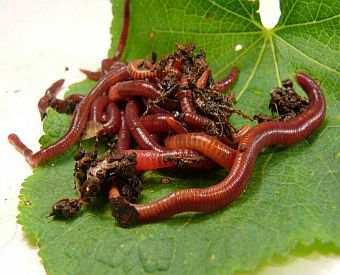10 Simple Techniques For Red Wiggler Express
Table of ContentsSome Known Incorrect Statements About Red Wiggler Express An Unbiased View of Red Wiggler Express8 Easy Facts About Red Wiggler Express ExplainedAbout Red Wiggler ExpressThe Buzz on Red Wiggler Express
And the flourishing Red Worm populace? Even in the lot that was established up straight in front of yard composters with existing Red Worm swarms.
Numerous ranges, consisting of Red Wigglers, European Nightcrawlers, and Lumbricus varieties were brought over from the European continent. Yet right here's the thingNative or otherwise - and as gifted as they go to being able to make it through in a wide-range of atmospheres and problems -. In other words, they are far a lot more likely to hang around in any kind of energetic composting systems you have actually set up, than they are to wander off and begin wrecking the environment.
Roots require oxygen for respiration and depend on smooth airflow within the dirt to grow. When it rains, soil can come to be saturated with water, minimizing the oxygen available and hindering nutrient absorption. To preserve an optimal equilibrium, the dirt needs to enable water to drain effectively, leaving sufficient space for air to support root wellness
Things about Red Wiggler Express

When it involves worms for composting, what enters your mind? If you were an earthworm dog breeder, supplier, or simple gardener, then you 'd know that red wiggler worms are the suitable worms for vermicomposting. To read more regarding these earth wonders, gone through some of the red worm truths below.
(https://disqus.com/by/rwigglerexnc/about/)But if they extend their bodies, you'll be able to see the red stripes on their skin. When raising worms such as red wiggler worms, you ought to have the ability to understand how to make excellent usage of them. When you're able to keep and care for their habitat well, and additionally feed them the appropriate type of natural wastes, after that they'll be able to create nutrient-packed and quality-rich worm spreadings for you (likewise called worm poop or compost).
Red Wiggler Express - Truths
What do worms consume? Well, these red wriggler worms can be fed with kitchen scraps and garden wastes.

This actions makes them appropriate for life in worm containers, compost stacks, and various other restricted spaces where natural waste is plentiful. Developing an optimum setting for red wigglers needs a thoughtful approach. Consider the complying with necessary elements to look after red wigglers in your home and ensure their health: Make use of a bedding of shredded paper or cardboard.

Red wiggler worms recreate by laying little, lemon-shaped eggs in protective cocoons. These cocoons are typically deposited in the bed linens and hatch into child worms within a few weeks.
Rumored Buzz on Red Wiggler Express
Their flexibility and durability have actually made them a prominent choice for vermicomposting in various areas around the world. Consider safety steps for very severe temperatures such as: Shielding the worm bin with layers of straw or leaves. Worm Farms Near Me.

When caring for your red wigglers it is necessary to bear in mind to: 1) K.I.S.S (Maintain it Simple) and 2) every little thing in moderation. These policies relate to feeding your garden compost worms, watering your worm bins, and just about every little thing else entailed in looking after them. Just remember - you can constantly include more food later on (however it's hard to remove feed once it's been included to a bin!).
Because I fed the red wigglers and garden compost worms as well a lot, they weren't able to keep up and over time the older food went uneaten and created anaerobic conditions that eliminated the worms. Here're the 6 golden rules for exactly how frequently and just how much to feed your worms: Rule # 1: Small amounts!
How Red Wiggler Express can Save You Time, Stress, and Money.
Leftover food will certainly cause anaerobic problems that will certainly eliminate your real-time worms. It is alright to spray a little of their initial bed linens (which should already be in the bin) over the food, but the food ought to never be buried and ought to be noticeable to your eye. Policy # 5: See regulation # 1! Rule # 6: After the first feeding, feed the worms 1/3 to 1/2 of their weight.
 Richard "Little Hercules" Sandrak Then & Now!
Richard "Little Hercules" Sandrak Then & Now! Amanda Bearse Then & Now!
Amanda Bearse Then & Now! Andrew Keegan Then & Now!
Andrew Keegan Then & Now! Michael C. Maronna Then & Now!
Michael C. Maronna Then & Now! Jane Carrey Then & Now!
Jane Carrey Then & Now!